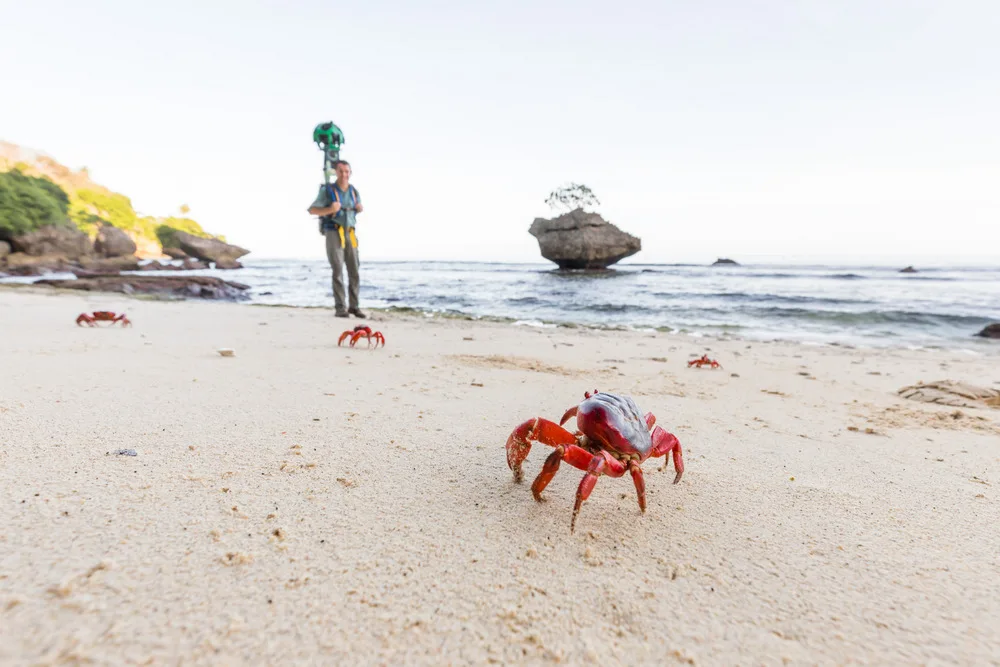
Traveling with crabs can be an exciting yet challenging adventure. Whether you’re a marine enthusiast or a hobbyist, knowing how to transport these delicate creatures is essential. In this comprehensive guide, we’ll delve into the best practices for traveling with crabs in your personal vehicle, ensuring their safety and well-being throughout the journey.
Key Takeaways
- Transporting crabs requires careful planning and consideration.
- Maintain a suitable environment to mimic their natural habitat.
- Adequate preparation and research are vital for a successful trip.
Preparing for Your Crabventure
Before embarking on your crabventure, it’s crucial to gather all the necessary supplies and information. Start with a spacious and secure container, such as a well-ventilated plastic tub with a lid. Create a suitable habitat by lining the container with damp sand, providing a hiding place, and maintaining a stable temperature.
Choosing the Right Crabs
Selecting the right crabs for your journey is essential. Research the specific needs of the crab species you plan to transport. Whether you’re traveling with hermit crabs, fiddler crabs, or other varieties, understanding their habits and preferences is key to ensuring a comfortable journey.
Handling and Transporting
When handling crabs, be gentle and cautious. Avoid sudden movements that could stress or injure them. Use a small scoop or your hands to carefully pick them up, ensuring their claws are secure. Place the crabs in a separate, well-ventilated container for transport.
Feeding and Hydration
During the journey, provide appropriate food and water sources to keep your crabs nourished and hydrated. Use small containers with secure lids to prevent spills and maintain cleanliness within the transport enclosure.
Maintaining Proper Temperature and Humidity
Crabs are highly sensitive to temperature and humidity changes. To mimic their natural habitat, monitor and regulate these conditions in the transport container. Use a thermometer and a hygrometer to ensure optimal levels.
Protection from Stressors
Crabs can easily become stressed during travel. Minimize disturbances and loud noises, as these can agitate them. Keep the container in a stable position and avoid exposing the crabs to direct sunlight or extreme temperatures.
Exploring Destinations for Your Crabs
Now that you’ve learned the essentials of traveling with crabs, it’s time to explore exciting destinations where you can take your aquatic companions. Whether you’re planning a short trip or a more extended adventure, consider these options for crab-friendly destinations.
Coastal Getaways
Beach Vacations: Many beach destinations offer opportunities to explore coastal ecosystems where crabs thrive. Look for quiet, less crowded beaches where you can safely release your crabs to enjoy their natural habitat.
Tidal Pools: Coastal areas with tidal pools are perfect for observing crabs in their element. Keep a close eye on your crabs as they explore these unique environments.
Aquarium Visits
Public Aquariums: Visit public aquariums with dedicated crab exhibits. It’s an educational experience for you and a safe way for your crabs to interact with their own kind.
Educational Trips
Marine Biology Field Trips: Join marine biology field trips or workshops where experts guide you through crab habitats and behavior. It’s a fantastic opportunity to deepen your knowledge and share the experience with your crabs.
Nature Reserves and Parks
Wetland Parks: Wetland parks and nature reserves often have crab-inhabited areas. Check their policies regarding bringing your crabs and explore these natural habitats responsibly.
Camping Adventures
Camping by the Shore: If you enjoy camping, consider beachside or riverside camping trips where you can introduce your crabs to new environments. Ensure your campsite follows environmentally friendly practices.
Crab-Specific Events
Crabbing Festivals: Some regions host crabbing festivals, allowing you to participate in crab-related activities while showcasing your crabs to fellow enthusiasts.
Responsible Releases
Conservation Initiatives: Join or support local conservation initiatives that focus on crab populations. These efforts help protect their natural habitats and ensure the well-being of these unique creatures.
Coastal Restaurants
Crab-Friendly Restaurants: Look for restaurants with outdoor seating by the coast. You can enjoy a meal while your crabs experience a coastal ambiance.
Conclusion
In conclusion, traveling with crabs can be a rewarding experience when done with care and preparation. By providing a comfortable and stress-free environment, you can ensure the safety and well-being of your crab companions throughout the journey.
Remember to research their specific needs, maintain proper conditions, and handle them with gentleness and patience. Whether you’re exploring new horizons or relocating your aquatic friends, these guidelines will help you embark on a successful crab venture.



